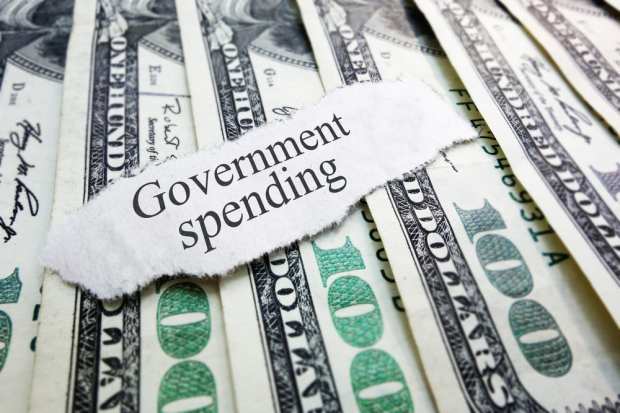The Public Perception Challenge Of Public Procurement

The U.S. Department of Defense has pressed the pause button on its search for a cloud computing vendor.
Earlier this month reports in NPR said only a few weeks before the government was slated to announce the winner of a 10-year, $10 billion cloud computing Project under Project Joint Enterprise Defense Infrastructure (Project JEDI), newly-appointed Defense Secretary Mark Esper decided to halt and review the process.
The government’s procurement of cloud computing services has been hit by criticism, largely around accusations the Department of Defense unfairly favors Amazon’s Amazon Web Services, with Oracle and IBM, both of which were eliminated from the bidding process, accusing the government of an unfair procurement process.
The case highlights the high-profile, high-scrutiny process of government procurement, particularly as bigger names like Amazon step into the fold.
Ryan Walicki, a partner at source-to-pay and eProcurement consulting firm Nitor, told PYMNTS in a recent interview that while Nitor does not have one particular stance about Project JEDI and the accusations of anticompetitive procurement processes, the saga does reflect the intensity with which public perception impacts government’s spending activity.
“The biggest challenge public sector organizations face is balancing fairness, process, [and] transparency while utilizing taxpayer dollars [to] maximize value,” he said, adding that legislation combined with public perception “can heavily influence how engaged an organization can get with their supply base.”
That has broad implications both for government entities procuring goods and services and for the vendors that want to provide them.
On the government side, that demand for transparency and fair competition means each step in procurement is scrutinized, from sourcing to the completion of a project — a reality that makes spend visibility, and technologies that can provide it, essential. Yet according to a 2017 study from business-to-government technology firm Onvia, government procurement officials increasingly feel the pressure to “do more with less.”
Vendors, too, are feeling the weight of public scrutiny over public sector contracts.
Some suppliers will find that the value of services they can provide will look significantly different to private clients than they do with public sector buyers, said Walicki. Whereas a private buyer will have clear goals to lower costs and widen margins, government entities also must maximize taxpayer value and promote transparency and inclusiveness in the bidding process — meaning a more complex set of goals for vendors.
Last week, reports in the New York Times highlighted one case in Los Angeles, where the Los Angeles. County Metropolitan Transportation Authority (L.A. Metro) has become embroiled in a legal dispute with a major bus supplier. According to reports, the government’s mandate for minimum wage and job creation requirements to award the contract is difficult to enforce and could lead to higher bids from potential vendors that need to raise costs to cover the costs of those mandates. Those objectives are rarely, if ever, seen in private B2B procurement.
According to Walicki, there are other hurdles for B2G vendors looking to win contracts — especially smaller suppliers looking to step into the public sector for the first time.
“There are appropriate guard rails to how and when to engage with public procurement officials, which makes it difficult to: a) get attention and b) have the opportunity to differentiate yourself beyond schedules, qualifications and certificates,” he said.
A 2017 survey by BCG and Eastern Foundry found that smaller companies and startups perceive those barriers to be especially high, pointing to a lack of clarity in how to connect with government agencies, a complex contracting and bidding process, and the assumption that a startup has no chance to secure a contract as top factors preventing businesses from even trying.
At the time Onvia’s report was published, B2G Market Analyst Paul Irby said the results reflect the importance of vendors’ collaboration with potential buyers to forge deeper relationships. Walicki agreed and warned B2G vendors to avoid what he described as the “self-inflicted wound” of assuming the barriers to stepping into the public sphere are too high.
Indeed, the process can be vastly different than in the private sector. But technology, he said, has opened doors for governments to more efficiently issue requests for proposals and source appropriate vendors, allowing them to be more cost-effective and focused on the strategic goals of a contract.
For government entities themselves, there is still a long way to go to achieve the kind of spend visibility demanded of them by the public sector. A recent Governing Institute survey found that only 35 percent of government entity respondents can access updated spend information and metrics. Two-thirds of the state government entities surveyed do not have an eInvoicing solution in place, however, according to analysts, governments show an increasing interest in eProcurement technology that will promote digitization, automation and spend transparency.
Meanwhile, for suppliers, Walicki said, technology enables firms to have more opportunities than ever to secure a contract.
“Government procurement has benefited from technology as it allows for immediate, national [or] global posting of opportunities,” he said. “That enables fairness [for suppliers] — if you have an internet connection, you can see what opportunities are out there for you.”